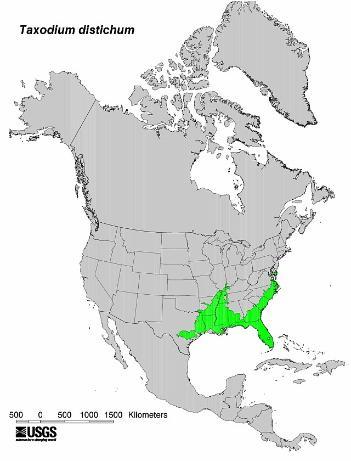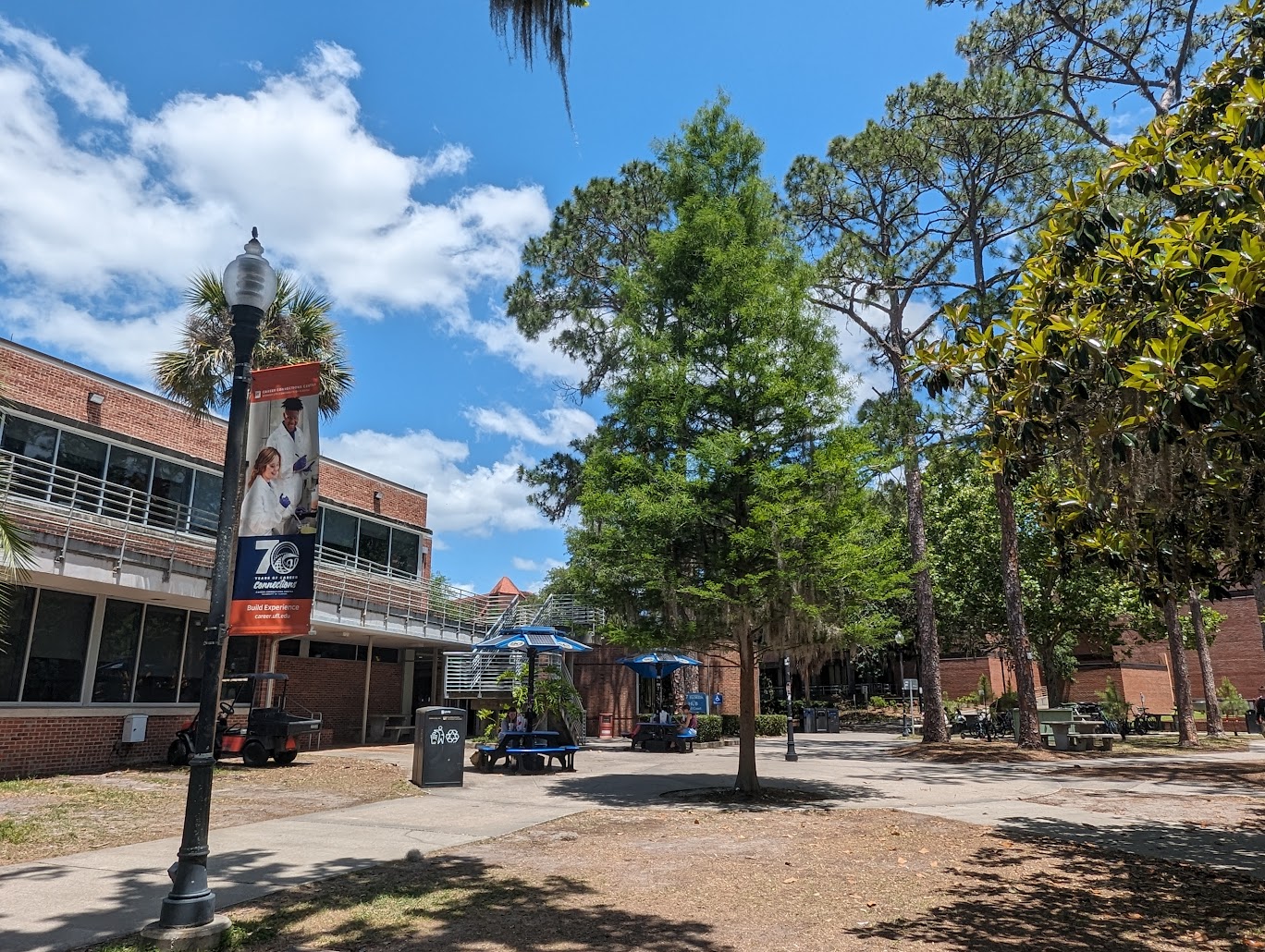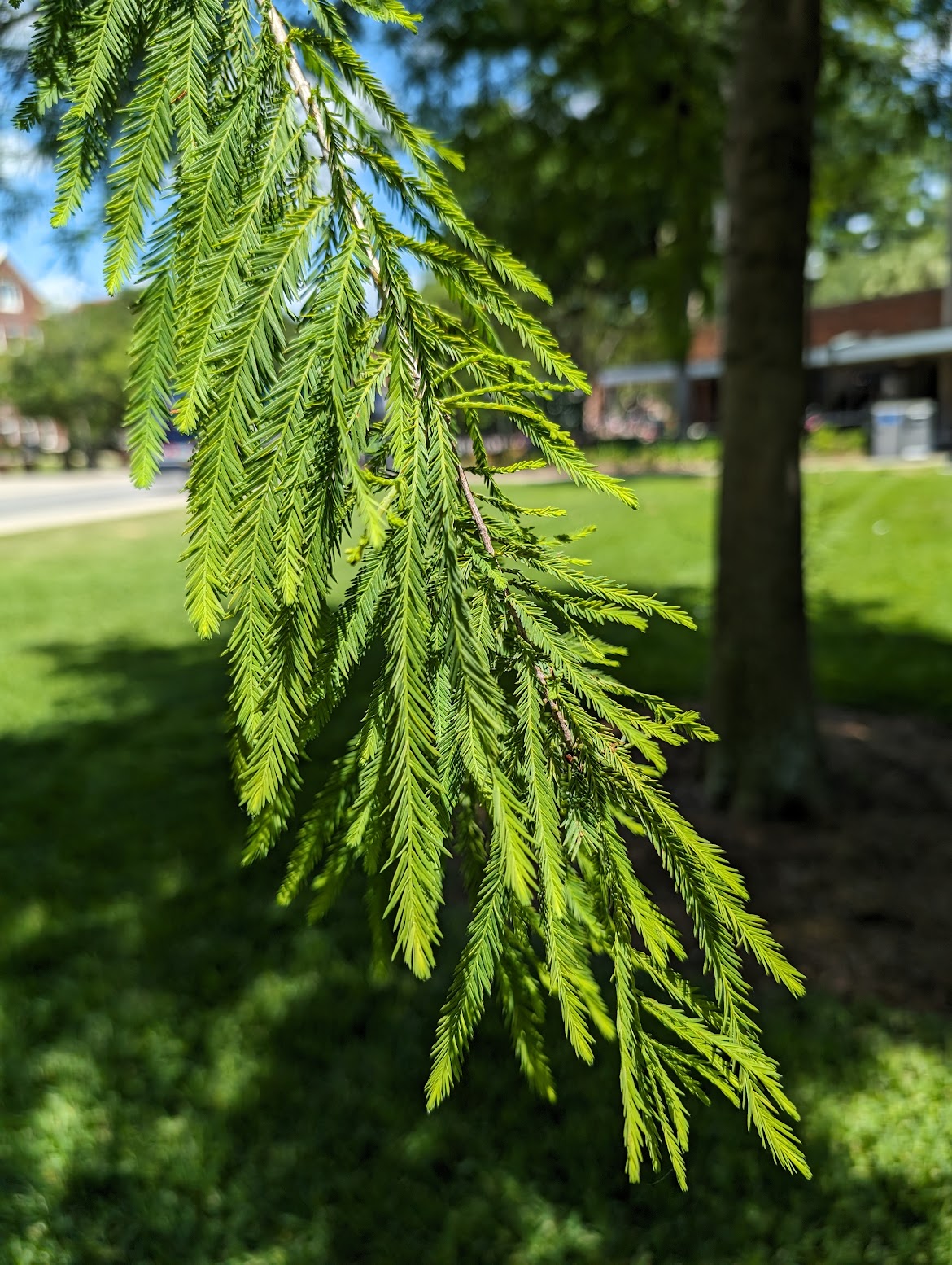Cupressaceae - Cypress Family
In 2024, this bald cypress measured 40 feet tall and had a diameter of 9 inches. Based on USDA Forest Service models, it will absorb approximately 1,209 lbs. of carbon over the next 20 years. Put simply, this tree will offset up to 4,892 car miles worth of carbon dioxide.
See all species on our Campus Tree Tour.
Introduction
The bald cypress is a tall, long-lived tree that grows in the wetlands of the Eastern United States. Naturally found near running water, its wide buttressing base, woody knees, and straight growth makes it easily recognizable. Old-growth bald cypresses were popular in the timber industry for their decay resistance, yet many trees today do not mature enough to develop this resistance. Instead, the bald cypress is a prominent urban tree, commonly planted along streets and parks.
Physical Description
Life expectancy: Up to 600 years, with some growing up to 1,200 years
Height: 100 – 150 feet
Crown: 25 – 35 feet
Diameter: 84 – 144 inches
Bark: Reddish grey, fibrous and shreddy bark with a buttressing (wide) base that provides stability.
Leaves: Feather-like branchlets that extend from branches. Leaves are the small individual shoots alternately arranged along the branchlet, sticking out laterally.
Knees: Woody knees, or above ground roots (up to 6 ft.), that grow around the perimeter of the tree. Provides stability in flooded soils.
Flowers: No flowers.
Fruits: Produces cones (1/2 to 1 inch), not fruit, that are globose (round) and green.
Key Identification Characteristics: feather-like leaves, bark, found near running water, cypress knees.
Past and Present Uses
Old-growth bald cypress trees contained cypressene, an oil from the wood which made the tree resistant to decay. This quality made its timber valuable for many wood products such as planking in boats, river pilings, furniture, fences, flooring, cabinetry, greenhouses, and more.
Although many trees no longer develop rot resistance, the bald cypress is still a commercial timber species. In addition, bald cypresses are attractive trees common in urban landscaping for their feathery leaves and shreddy bark.
Ecological Importance
Origin: Native to the United States
Native Range: Found extending north from Delaware to Florida and west to Texas.

Figure 1. Native range of Bald Cypress. Photo credit: U.S. Geological Survey
Bald cypresses exist in humid and sub-humid climates with stands growing on flat ground or in slight depressions less than 100 ft. above sea level. These trees are commonly found growing in river bottoms, coastal forests, and wet sites with poorly drained soils and frequent flooding. Bald cypresses are associated with moving water, distinguishing it from the pond cypress (Taxodium ascendens), a related tree that grows in still waters. Within a forest, the bald cypress is associated with swamp tupelo, red maple, sweet bay, sweetgum, and various oaks.
The bald cypress is a food source for wildlife and a rookery for birds. The seeds are consumed by squirrels and a variety of birds such as wild turkeys and waterfowl. The top branches provide an ideal nesting site for eagles and ospreys, and its lower branches often host Spanish moss and resurrection ferns. Other birds, like the prothonotary warblers, create nesting cavities in decaying cypress knees.
More Information
https://edis.ifas.ufl.edu/publication/ST620
References
Gilman, E. F., Watson, D. G., Klein, R. W., Koeser, A. K., Hilbert, D. R., & McLean, D. C. (2019c). Enh-778/ST620: Taxodium distichum: Baldcypress. Ask IFAS - Powered by EDIS. https://edis.ifas.ufl.edu/publication/ST620
Wilhite, L. P., & Toliver, J. R. (n.d.). Baldcypress. Taxodium distichum (L.) Rich. . https://www.srs.fs.usda.gov/pubs/misc/ag_654/volume_1/taxodium/distichum.htm#:~:text=Baldcypress%20(Taxodium%20distichum)%20is%20a,essentially%20the%20same%20natural%20range



